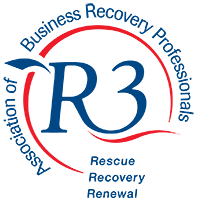The UK economy has seen significant turbulence in recent years, and, with the ongoing challenges of inflation, rising interest rates, and global supply chain disruptions, many businesses are struggling to stay afloat. As a result, business insolvency rates have steadily risen, with some sectors facing more intense pressures than others. This blog explores the reasons behind the rise in business insolvencies, identifies the sectors most affected, and provides advice for business owners seeking solutions during these difficult times.
Understanding the rise in business insolvency rates
Business insolvency occurs when a company can’t meet its debt obligations as they fall due. In 2024, UK business insolvency rates have surged as companies across various sectors face financial challenges. High operating costs, supply chain disruptions, and a tough economic climate have created significant hurdles.
Persistent inflation, rising energy costs, and increased wage demands are straining businesses, especially those with slim profit margins. Furthermore, higher interest rates set by the Bank of England have raised borrowing costs, making debt servicing unmanageable for many companies and driving them towards insolvency.
Which sectors are most affected?
While insolvency can affect any industry, some sectors have been more vulnerable in 2024. These include:
1. Retail
The retail sector has been one of the hardest hit by rising business insolvency rates in 2024. Businesses, especially small to medium-sized retailers, are struggling with increased operating costs, consumer reluctance due to economic uncertainty, and fierce online competition. The rise of e-commerce giants, combined with changing consumer habits, has further strained traditional brick-and-mortar retailers.
High street stores, in particular, have been impacted by the ongoing shift towards online shopping. With footfall decreasing and the cost of maintaining physical locations rising, many businesses in retail are finding it hard to balance the books. Even large retail chains feel the strain, leading to widespread closures and insolvencies.
2. Hospitality
The hospitality industry, including restaurants, pubs, and hotels, has faced an uphill battle since the pandemic, and 2024 brought further challenges. After years of restrictions, businesses are still trying to recover lost revenues while grappling with rising staff wages, inflation, and energy costs.
The increased cost of raw materials, coupled with the ongoing staff shortage crisis, has put further strain on businesses in this sector. Many have found it difficult to adjust their prices to keep pace with rising expenses while remaining competitive. As a result, a significant number of businesses in the hospitality industry are succumbing to insolvency.
3. Construction
The construction sector, a vital part of the UK economy, has also seen a rise in insolvencies. The combination of rising material costs, delays in supply chains, and increased borrowing costs has placed contractors under severe financial strain. In particular, small construction firms with limited cash flow have been hardest hit.
Construction insolvencies are often triggered by delays in payment from clients, which can be compounded by disputes and contractual issues. This is particularly problematic for businesses working on large, long-term projects where cash flow becomes tightly managed. With inflation pushing up the cost of materials and labour, many smaller firms find it impossible to cover their expenses, leading to liquidation.
4. Manufacturing
The UK manufacturing sector has seen its fair share of challenges in 2024. Rising energy prices and the ongoing shortage of semiconductors have added significant pressure to an already burdened industry. Many manufacturers, particularly in sectors such as automotive and electronics, rely on global supply chains which have been disrupted by geopolitical tensions.
Smaller manufacturers with less financial resilience are particularly vulnerable to insolvency. The price increases for raw materials, along with longer lead times for essential components, have led to supply chain bottlenecks, making it harder for businesses to meet customer demands and deadlines. As a result, cash flow has been significantly impacted, forcing many businesses into financial distress.
5. Transport and logistics
The transport and logistics sector has faced several challenges in 2024, contributing to the rising business insolvency rates. From increasing fuel prices to labour shortages and Brexit-related customs issues, the sector has been under constant pressure.
Small transport companies, especially those relying on road haulage, feel the weight of rising fuel prices and fluctuating demand. Delays at ports and new customs regulations post-Brexit have disrupted supply chains, making it even harder for companies to remain profitable. Also, the driver shortage in the UK has made it even more difficult for logistics businesses to operate effectively, leading to a rise in insolvencies in this sector.
6. Technology startups
Despite being one of the more lucrative sectors for innovation, tech startups in the UK face their own challenges. High business insolvency rates in this sector are often linked to the difficulty of securing venture capital in the current financial climate. Investors are becoming more cautious as interest rates rise, and, with many tech startups operating in a high-burn cash environment, they are finding it difficult to survive without continuous funding.
Many tech startups also rely on international expansion, which has been complicated by fluctuating exchange rates and regulatory changes. Coupled with a highly competitive market, these factors have led to rising insolvencies among startups which were once seen as the economic future.
Why are business insolvency rates rising across these sectors?
Rising insolvency rates across these industries are driven by several factors. Economic instability, high operating costs, and supply chain disruptions have created a perfect storm for struggling businesses. Rising interest rates and inflation have made it harder to service debt or secure new funding, pushing many companies toward insolvency. Plus, shifting consumer habits and the digital transition have further challenged traditional business models.
How can businesses address insolvency issues?
For business owners facing insolvency, it’s important to seek professional advice as soon as possible. There are many potential solutions, including administration, voluntary liquidation, and Company Voluntary Arrangements (CVAs), which can give businesses a chance to restructure and avoid closure in some cases.
Ask an expert
If your business is under financial strain, our qualified Insolvency Practitioners can help. Authorised by the Institute of Chartered Accountants in England and Wales, we offer free, impartial advice to find the best liquidation solution. Contact us via our form, live chat, email at mail@simpleliquidation.co.uk, or call 0800 246 5895 – we’re here to help.




